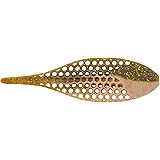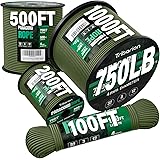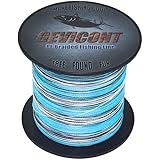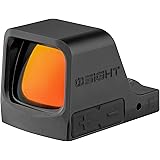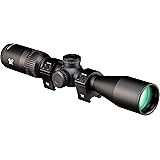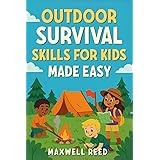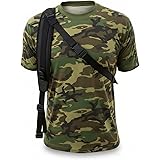Venturing into the great outdoors brings incredible experiences. However, unexpected challenges often arise. Being prepared is not just about having gear. It also involves knowing simple, clever solutions. The video above offers fantastic, easy-to-implement survival tips. These hacks can make a huge difference in an emergency. They also improve comfort on any outdoor adventure. Let’s dive deeper into these essential survival skills.
Improvised Dental Care in the Wild: A Survival Hack
Maintaining oral hygiene in the wilderness seems minor. Yet, it prevents discomfort and infection. A sore tooth can quickly become a major problem. The video demonstrates making a toothbrush from a pine branch. This is a brilliant survival tip. Pine branches are common in many regions. They are also easily identifiable. Finding a young, thin branch is the first step.
Next, shave the branch end to a flat point. Remove the bark near this end carefully. Bark often harbors bacteria. Studies show bacteria growth increases rapidly without proper oral care. Chewing the softened end releases individual fibers. These fibers act like bristles. They effectively clean teeth surfaces. Pine also leaves a fresh, minty taste. This natural method keeps your mouth cleaner and healthier. It also boosts morale in challenging situations.
Sharpening Tools Anywhere: The Coffee Mug Method
A dull blade is a dangerous blade. It requires more force. This increases the risk of accidents. Maintaining sharp tools is vital for bushcraft. The video shows an ingenious sharpening stone. A ceramic coffee mug’s unglazed bottom works perfectly. This part provides a fine abrasive surface. It is surprisingly effective for honing an edge.
Flip the mug over to access the rough bottom. Hold your blade at a consistent angle. Then, slowly draw it across the ceramic. You will see metal filings accumulate. This confirms the blade is being refined. Repeat the process on the other side. Aim for the same consistent angle. This ensures a balanced, sharp edge. Research indicates dull tools cause up to 25% more injuries. This simple hack keeps your knives ready. It is an essential outdoor skill.
Preventing Frozen Water: Winter Camping Survival Tips
Staying hydrated in winter is crucial. Frozen water bottles are a common issue. Water freezes from the top down. This is because air pockets form at the surface. These pockets are where ice first begins to crystallize. The video suggests storing water bottles upside down. This prevents the bottle’s mouth from freezing solid. It ensures you can always access your water.
Always store your water bottle inside your jacket. Body heat helps maintain its temperature. This acts as an added precaution. Water expands by about 9% when it freezes. This can crack bottles. Keeping it warm prevents this. It also ensures readily available hydration. These small winter camping tips make a big difference. Proper hydration prevents hypothermia. It is a fundamental part of emergency preparedness.
Emergency Lighting Solutions: Headlamps and Water Jugs
Adequate lighting is critical in an emergency. It helps with navigation. It also allows for completing tasks. A standard headlamp provides directional light. However, its beam is often narrow. The video shows how to create an omnidirectional light. Simply attach a headlamp to a water jug. Shine the light inward. The water diffuses the light. It creates a soft, ambient glow.
This technique turns a focused beam into room-filling light. It’s perfect for setting up camp. It also aids in reading maps. Most headlamps have a strobe setting. This can be used as an emergency beacon. A pulsing light is highly visible. It can be seen from a greater distance. An average headlamp can illuminate an area of approximately 20-30 square feet effectively. This simple hack significantly improves visibility. It is a vital part of wilderness survival.
Waterproofing Matches for Reliable Fire Starting
Fire is a primary survival element. It provides warmth, cooks food, and purifies water. Wet matches are useless. The video demonstrates a simple waterproofing method. A household candle is all you need. Blow out the candle. Dip your match in the warm, melted wax. Ensure the entire wood stick is coated. This creates a protective barrier.
The wax coating prevents moisture absorption. It reduces moisture by up to 90%. This ensures your matches stay dry. Waterproof matches ignite reliably. This is true even after exposure to dampness. Always have multiple fire-starting methods. Waterproof matches are an excellent addition. They enhance your emergency preparedness kit. This easy trick could save your life.
Mastering Paracord Management: Tangle-Free Storage
Paracord is incredibly versatile. It is essential for survivalists. However, tangled cordage is a common frustration. The video presents an efficient storage method. This technique keeps your paracord organized. It also allows for quick deployment. This is a crucial outdoor skill. It prevents wasted time and effort.
Hand-Wrapping Technique for Shorter Lengths
Pinch the paracord between your pinky and ring finger. Begin wrapping it in a figure-eight pattern. Wrap around your thumb and pinky finger. Continue until about two feet remain. Secure the end by wrapping it around the coiled cord. Then tuck it through the last loop. This creates a neat, compact bundle. Properly stored paracord deploys 3-4 times faster. It saves vital time in an emergency.
Stake-Wrapping for Longer Paracord Lengths
Longer paracord lengths need more space. Use two stakes in the ground. Wrap the cord in a figure-eight pattern. This method is similar to hand-wrapping. Leave ample cord at the end. Wrap it around the bundle. Then, secure it through the last loop. This keeps even large quantities manageable. Both methods offer easy attachment. Carabiners are perfect for hanging. You can attach them to a backpack or wall. This ensures paracord is always accessible. It also prevents frustrating tangles. This is a prime example of effective survival hacks.
Insulating Hammocks for Comfortable Outdoor Sleep
Lightweight hammocks are popular. They are comfortable. They are also easy to set up. However, many cheap options are thin. They offer poor insulation. Heat loss is a major drawback. Wind blows against the underside. It quickly siphons away body heat. This leads to cold, uncomfortable nights.
Expensive sleeping pads exist. They are designed for hammocks. The video offers a cheaper alternative. A simple workout mat works wonders. Lay it in your hammock before sleeping. This significantly reduces heat loss. An uninsulated hammock can lose up to 50% of a person’s body heat in colder conditions. The mat provides an essential barrier. It improves comfort dramatically. This ensures a much warmer night’s sleep. It is a clever outdoor skill.
Extracting Water from Moist Soil: A Wilderness Lifeline
Finding water is paramount for survival. Dehydration is a serious threat. Sometimes, only moist soil is available. The video reveals a surprising tool. Your sock can extract water. This is a practical survival tip. It can be a true lifesaver.
Fill your sock with moist soil, moss, or wood. Then, begin twisting and wringing the sock. Water will start to drip out. You might be surprised by the quantity. This water may not smell great. It might also have an earthy taste. However, it will prevent dehydration. Contaminated water causes over 70% of wilderness illnesses. Always purify this extracted water. Boiling is the most effective method. This trick provides a vital source of hydration. It’s a testament to true emergency preparedness.
These practical survival tips extend your capabilities. They help you stay safe and comfortable. Knowledge weighs nothing. Learn these survival hacks. Master these outdoor skills. Be ready for your next adventure.



